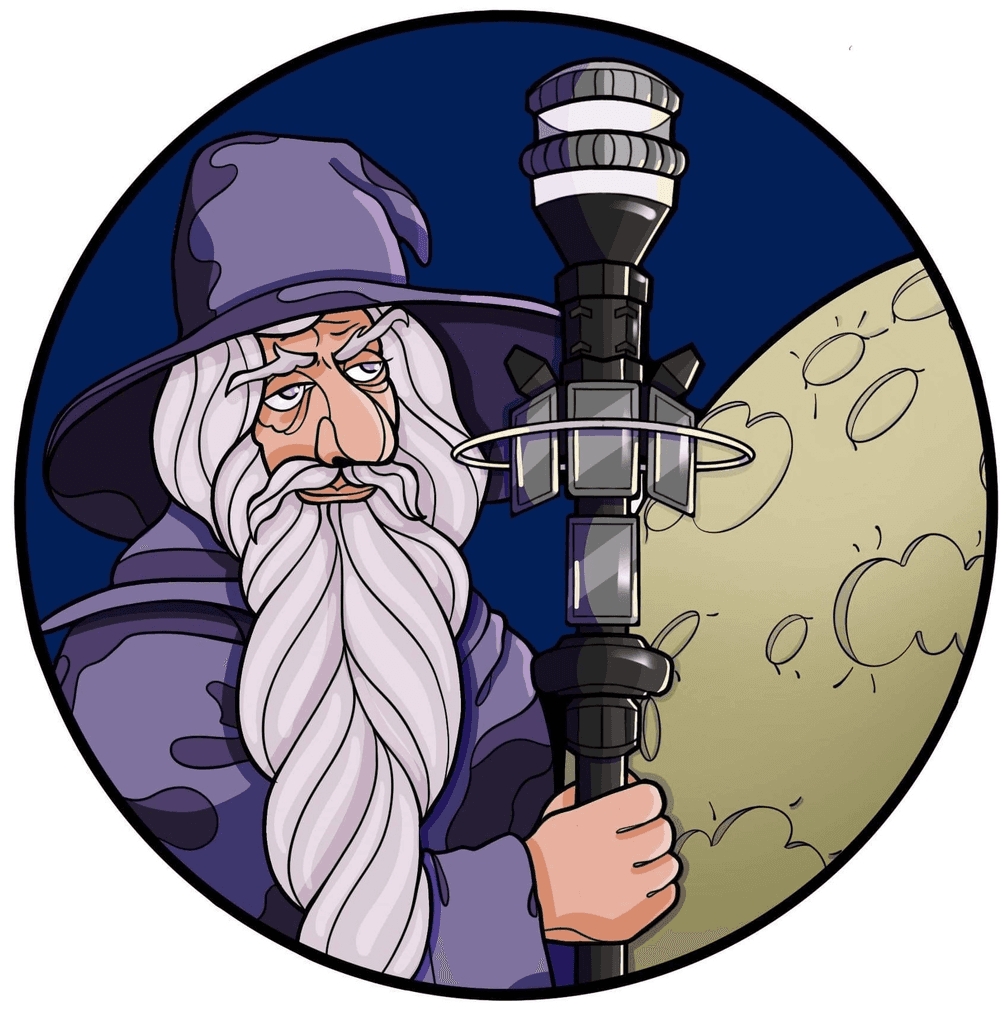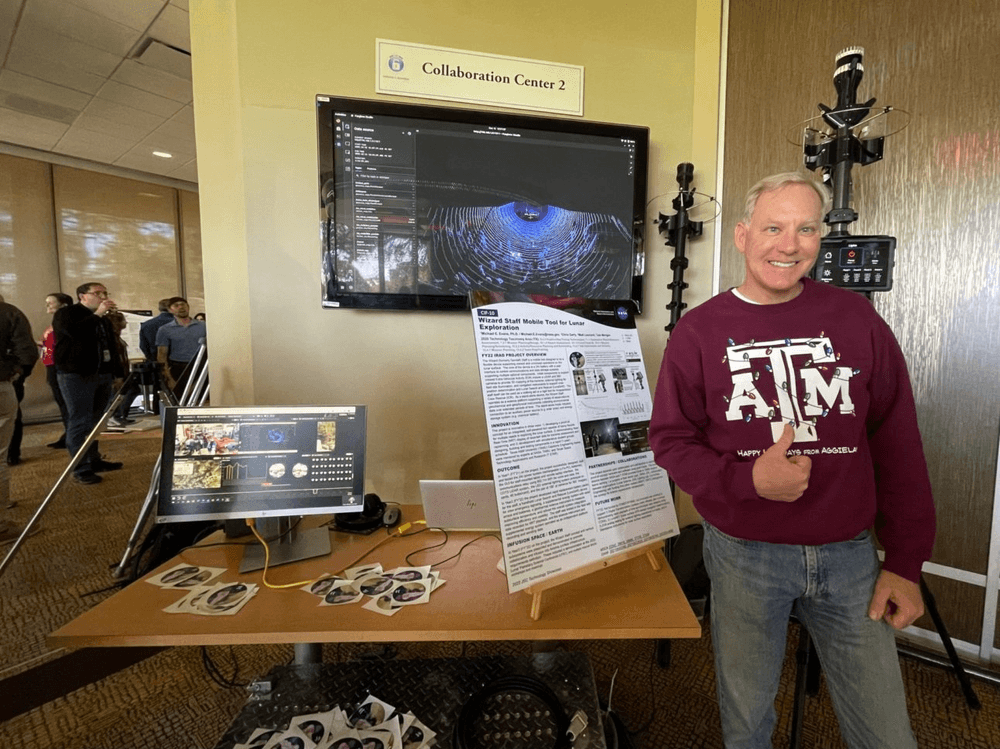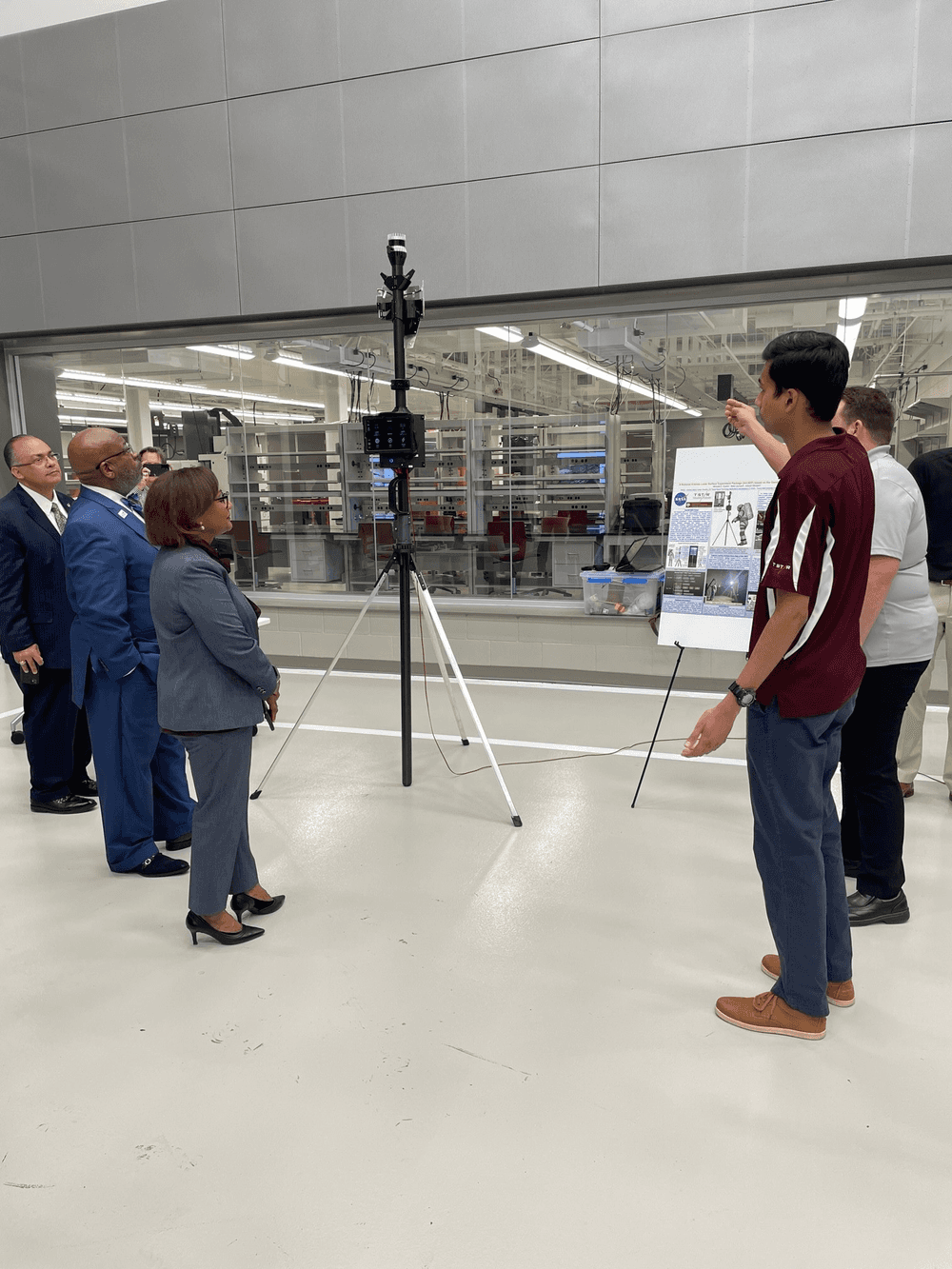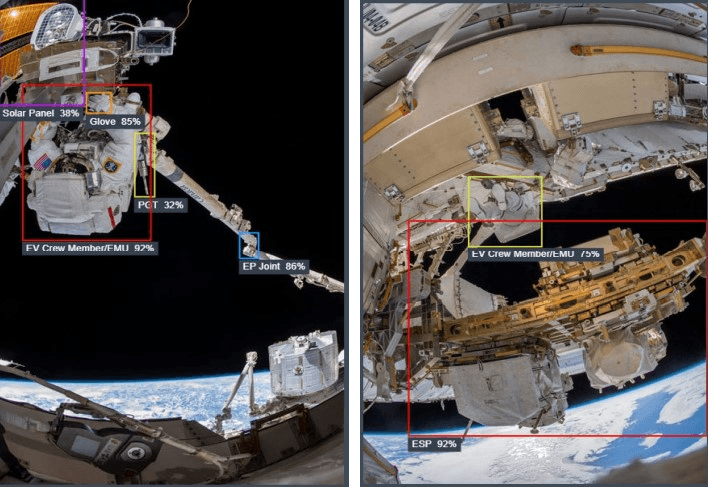Johnson Technology Showcase Recognizes Leading Innovators
In Dec. 2022, NASA's Johnson Space Center held its first annual technology showcase since the COVID pandemic. The holiday-themed ugly-sweater party featured cookies, candy, hot chocolate, and plenty of innovation and cheer. The Business Development and Technology Integration and Transfer Offices sponsored the event to encourage hands-on collaboration and technology infusion across the Johnson and White Sands Test Facility communities. Leading innovators were invited to showcase their work and network across the center. This year, 40 technologists presented their Independent Research and Development (IRAD) projects, big and small, to the Johnson community. Senior leaders and civil servants voted on the IRAD projects they felt best exemplified Johnson's vision to lead human space exploration.
“The development of new technology and innovation is critical for the future of our human spaceflight missions. The winners from this year's technology showcase highlight the unique work that our technologists at JSC are doing,” says Center Director Vanessa Wyche. “From groundbreaking technology that could assist astronauts as they navigate the lunar surface or enhance how we treat and recycle water on our spacecraft, to the new and novel application of software to improve safety and operations, these are just a sampling of projects we are investing in at the Johnson Space Center."
And the winners are…
The Wizard Staff: Mobile Tool for Human Exploration on the Lunar Surface

The Director's Choice Award goes to Dr. Michael Evans, who has developed the Wizard Staff, a mobile tool designed for safe navigation on the surface of the Moon and Mars. The portable platform provides a rechargeable power system with data and voice communications for various attached sensors and instruments. The Wizard Staff aids in illumination, photography, navigation, communication, and science explorations. As a science instrument, the staff is connected to an independent solar array and battery system for long-duration experimental data collection. This lunar walking tool can be controlled by a local Graphical User Interface or remotely. A hand-held crew device measures the astronaut's biometric data and heart rate during spacewalks and provides emergency messaging that communicates via the staff to a base station. “The initial concept was to provide an external light to do a better job identifying and collecting valuable lunar samples to take back to earth,” Dr. Evans said. The Wizard Staff has evolved into a broader tool than originally envisioned, providing communications and power for other lunar surface infrastructure functions.
The initial Wizard Staff weighs 12 kg (26 lbs.) on Earth but only 2 kg (4 lbs.) on the Moon. This portable utility pole can be a beacon from far away, a streetlight near the landing site, or a work light for field geology. “You can put whatever you want on it, and it provides power and communication. We designed it like a garage power tool with easily replaced battery packs. The base of the staff is all battery, which can be easily disconnected and replaced with a new unit to support long surface extravehicular traverses.

Lights, Camera, LiDAR, Action!
With crew safety as the top priority, the first prototype of the Wizard Staff is equipped with LED lights and 360 ° cameras. A LiDAR atop the staff creates a three-dimensional point cloud for mapping and post-traverse rendering. A prototype geothermal probe, modeled on the Apollo sensor, has been tested as a science instrument proof-of-concept. Future development plans add surface networking features to expand communication coverage for the surface crew.
The project has been completely developed with funds supporting senior engineering student Capstone teams at Texas A&M University (TAMU). Seven teams at TAMU helped develop individual parts of the initial Wizard Staff with guidance from the private company Texas Space Technology Applications and Research (TSTAR) and subject matter experts from NASA.

***
NASA Object Detection System: Enhancing Operational Imagery and Video for Human Exploration
The runner-up for the Director’s Choice Award is the NASA Object Detection System (NODS), created by Kenton Fisher, Mark Lambert, Alex Stoken, Will Watson, and Jordan Lindsey. Human spaceflight missions rely on imagery and video to monitor crew and vehicle safety, track mission status, and plan future activities. The number of cameras integrated into mission architecture has grown significantly over the past few decades. However, the ability to process imagery has not improved at the same pace. This means millions of photos from past missions are undeveloped and yet to be utilized. That is where NODS comes into play, improving NASA imagery processes using AI-powered object detection by enabling automated tracking of objects and crew. Detecting and labeling objects in imagery will allow quicker and more robust image analysis across human spaceflight programs.
The computer vision and object recognition algorithms help improve safety and situational awareness, operation capability, and mission support and reduce the cost of manual imagery processing. The development will continue to test the ability to assess spaceflight imagery using only ground/lab images, implement additional text detection and recognition models, and design a video processing pipeline to expand use beyond still imagery. Future development will continue to improve technology for further missions, the highest priority targets being International Space Station, Gateway, and Artemis surface spacewalks.

***
Boric Acid Dispersion of Biofilm: An Antimicrobial Treatment for Clean Water in Space
Starla Thornhill won first place in the People's Choice Awards. She provided proof-of-concept for boric acid dispersion of biofilm as a method of antimicrobial treatment for improving spacecraft water recycling systems (WRS). Biofilms are an aggregate of microorganisms that attach to surfaces. In spacecraft, they can cause crew illness, occlusion of water lines, and corrosion of WRS materials. "The treatment of biofilms in spacecraft water systems has historically been limited by a lack of suitable methods to overcome biofilm-associated antimicrobial tolerance (AMT). One way to get around AMT is to induce biofilm dispersion," Thornhill said.
Although BA is a common additive in antiseptics, preservatives, and even contact lens solutions, the use of BA as a biofilm dispersant has only recently been discovered. Further research involves combining boric acid with relevant antimicrobials to see if it can treat biofilms grown on International Space Station materials like stainless steel and possibly lead to solutions for antimicrobial resistance in space.
***
Increasing Cognitive Ability/Reserve Using Software – Pilot Study
The runner-up for the People’s Choice Award is the Increasing Cognitive Ability/Reserve Using Software – Pilot Study (ICARUS-Pilot) developed by Carol Mullenax. ICARUS-Pilot provides a preliminary analysis of using commercial-off-the-shelf (COTS) cognitive training software to improve performance in an astronaut-like terrestrial population. This is the first study to provide cognitive training data related to tasks relevant to crew autonomous operations.
The effort involved an adaptive app-based COTS software package (BrainHQ) in executing cognitive training sessions. Five Johnson employees volunteered to be a part of the study. Performance was assessed before and after executing 18 remote cognitive training sessions three times per week. Pre- and post-training cognitive performance was measured using BrainHQ and a Cognition Test Battery, an independent suite of software tests developed for NASA and currently used in research studies on astronauts. BrainHQ internal assessment showed a 71% average performance metric increase and a 31 percentile overall ranking increase for the study cohort. Using the lessons learned in the pilot study, the team will continue data analysis and development of this concept.







